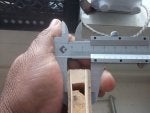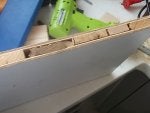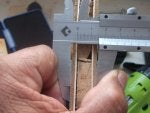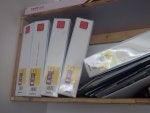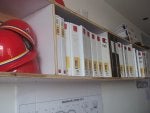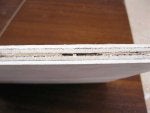Hi, guys!!!
We have a lot of documents binders lying around. To avoid cluttering in the office I decided to make a bookcase cabinet to put all of them inside. I bought one piece of Chinese plywood with melamine laminate at both sides. At a glance, the all around edges looked nice, the thickness was consistent and the price was incredible low but, after cut the pieces to length, according to the dimensions on my sketches, problems started. The thickness at the middle of the plywood was lower than the edges. A lot of voids were present and the lack of glue did not fix the laminates to the plywood sides properly.
To built the cabinets was too difficult because I needed to match the pieces to joint them with screws avoiding the internal voids. Once they were installed we put the binders inside and the cabinets had some sagging.
Never again I will use this material.
Here we already are on Chrismast but nobody seems to realize it.
We have a lot of documents binders lying around. To avoid cluttering in the office I decided to make a bookcase cabinet to put all of them inside. I bought one piece of Chinese plywood with melamine laminate at both sides. At a glance, the all around edges looked nice, the thickness was consistent and the price was incredible low but, after cut the pieces to length, according to the dimensions on my sketches, problems started. The thickness at the middle of the plywood was lower than the edges. A lot of voids were present and the lack of glue did not fix the laminates to the plywood sides properly.
To built the cabinets was too difficult because I needed to match the pieces to joint them with screws avoiding the internal voids. Once they were installed we put the binders inside and the cabinets had some sagging.
Never again I will use this material.
Here we already are on Chrismast but nobody seems to realize it.


